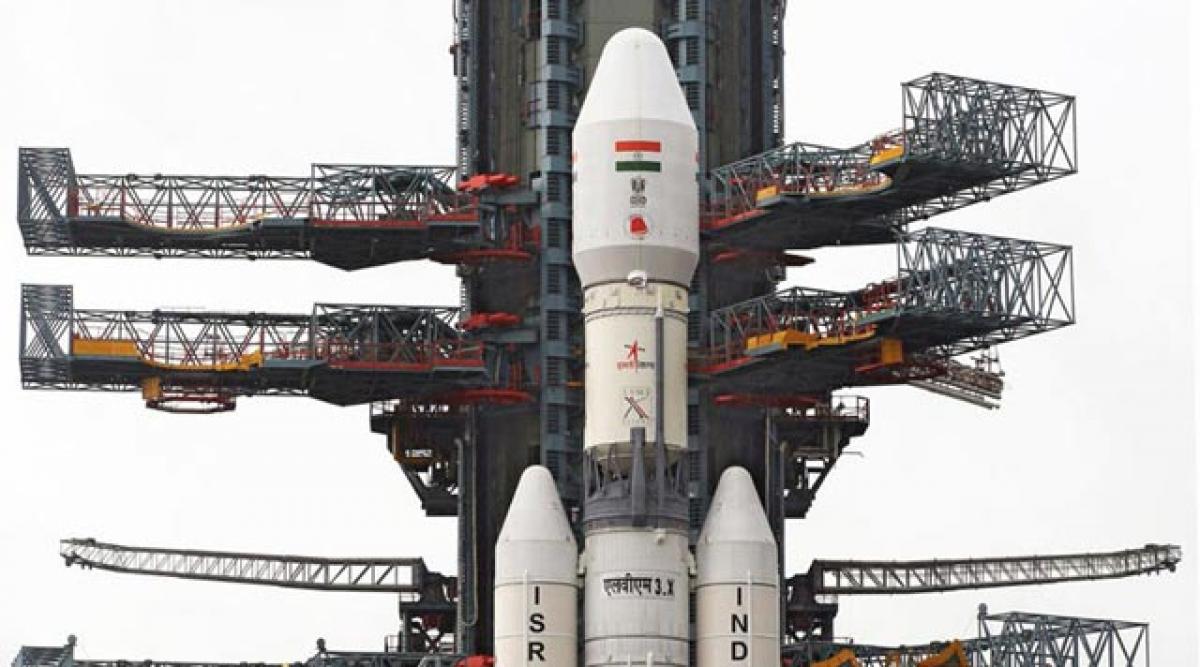Live
- Crop loans above `2 lakh will be waived soon: Ponnam
- Key sections in CLAT exam
- Destiny Led Me to Music: Yamini Gowribhatla
- After 26 years, man held for killing infant son
- Resolve public grievances on spot: Collector
- How Groundwater Depletion Is Shifting Earth’s Pole and Impacting Our Future
- Textiles parks to be set up in Anantapur & Kurnool dists
- 2nd batch of capacity building programme begins at IIM-V
- Blooming Minds receives ‘Best School’ award in TG
- Nagarkurnool: Students told about harmful effects of tobacco
Just In

The Indian Space Research Organisation\'s GSLV-F05 rocket, a MK-II type, made its flight on Thursday, carrying with it the INSAT-3DR advanced weather satellite.
The Indian Space Research Organisation's GSLV-F05 rocket, a MK-II type, made its flight on Thursday, carrying with it the INSAT-3DR advanced weather satellite. The advanced meteorological satellite will render a wide array of meteorological services to the country. Three meteorological satellites of India - KALPANA-1, INSAT-3A and INSAT-3D – have been operational in the geostationary orbit for the past one decade.
Following the explosion of the SpaceX rocket on the launchpad, global community keenly watched how the GSLV rocket with indigenously developed cryogenic upper stage placed the satellite, weighing 2,211-kg, in the Geostationary Transfer Orbit. GSLV is a three stage launcher that uses one solid rocket motor stage, one Earth storable liquid stage and one cryogenic stage. GSLV had launched various communication satellites among which EDUSAT is notable.
The Thursday launch is ISRO’s fourth using an indigenous cryogenic engine The first test-flight of the GSLV with a cryogenic upper, or third, stage happened in April 2001. It was a failure. After that, eight flights of the rocket happened over the next 14 years. Of these, five flew with a Russian cryogenic engine onboard while the other three used the indigenously developed ones. Three succeeded, four failed and one was a partial success. The first successful test-flight using the Russian engine happened in May 2003. The first successful test-flight using the indigenous engine happened in January 2014.
The GSLV is of three kinds: Mk-I, Mk-II and Mk-III. All three have a solid-fuel first stage and a liquid-fuel second stage. The Mk-I uses cryogenic engines of Russian make for the third stage. The Mk-II uses four liquid-fuel strap-on boosters in addition to the first stage and the CE-7.5 indigenous cryogenic engine for the third. The Mk-III will use two solid-fuel boosters for the first stage and the CE-20 indigenous cryogenic engine for the third.
In December 2014, taking its baby steps towards realising India’s ambition to send humans into space, ISRO successfully tested the atmospheric re-entry of a crew module after its heaviest launch vehicle GSLV Mk-III.The first developmental flight of the Mk-III is expected to happen in December 2016, when it will also carry the 3.2-ton GSAT 19 satellite. Once the Mk-III is ready, it will make ISRO self-sufficient in terms of launch capabilities, according to thewire.in.

© 2024 Hyderabad Media House Limited/The Hans India. All rights reserved. Powered by hocalwire.com







